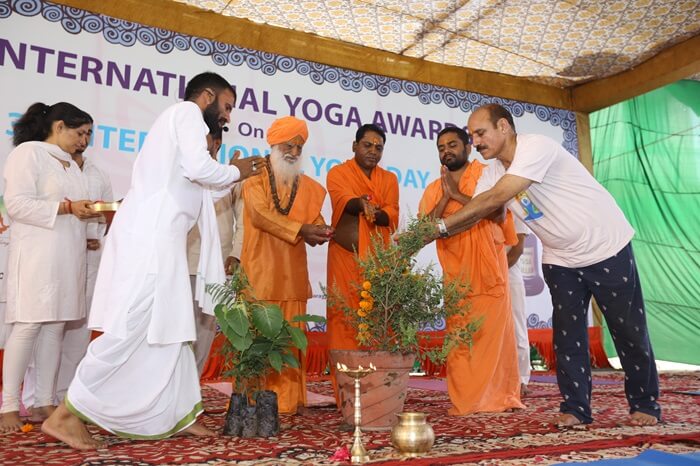Mastering Handstand Yoga Poses: Empowerment Through Balance
For some, handstands are intimidating, while for others, they are a source of empowerment. Regardless of how you view them, understanding proper alignment and techniques can transform handstands into a beloved aspect of your practice. With a strong grip and alignment knowledge, you’ll find yourself falling in love with these dynamic poses.
Benefits of Handstand Yoga Poses
Handstand Yoga Poses offer a unique rush of energy and a fresh perspective by being upside down. Engaging in these poses activates your entire body, including muscles such as the gluteus maximus, psoas major, spinal extensors, and oblique muscles.
The inverted position enhances blood flow to the head, boosting its health and vitality. The reversed blood flow in the legs and visceral region aids in tissue regeneration. Additionally, the increased oxygen and nutrient supply to the brain enhances mental well-being. Handstand Yoga Poses are associated with the Sahasrara (crown chakra), influencing cognitive abilities and awareness. Practicing handstands helps you connect with your higher self and the divine energy of the universe.

Preparatory Handstand Yoga Poses for Handstands
To prepare for hand stand pose, focus on these key poses:
- Plank Pose: Strengthens the core and arms, essential for supporting handstand poses. This posture builds wrist strength and overall body support.
- Boat Pose (Navasana): Engages the core, stretches the hamstrings, and strengthens the hips, which helps you control your lower body in inverted positions.
- Downward Dog: A beginner-level inversion pose that aids in proper body alignment while providing stretching and strengthening benefits.
- Child Pose (Balasana): Cultivates patience and groundedness by releasing tension and fostering calmness.
Steps to Achieve a Handstand
- Stage 1: Start with the L stand against the wall. Position yourself on all fours with your heels against the wall. Lift one leg at a time, aligning your foot with your hips. Gradually straighten both legs, lengthen the sides of your body, engage your abdominals, and roll your shoulders away from your ears.
- Stage 2: Face the wall and place your hands about 3-4 inches away. Enter the downward-facing dog pose, checking your alignment. Experiment with hops and donkey kicks to adjust your balance.
- Stage 3: Gently lift into a handstand. Keep your hips forward towards the wall so that your legs can rise above your hands. Find your balance by lifting your feet off the wall.
Advanced Handstand Yoga Asanas
Prepare your body and mind with these advanced yoga handstand poses:
- Downward Facing Tree Pose (Adho Mukha Vrksasana): Balance on your hands with your legs raised high. This pose offers physical, mental, and spiritual benefits, such as strengthening body areas, emotional stability, and energizing the crown chakra. Begin in downward dog, lift your heels, shift your weight to the balls of your feet, and transition into a full handstand.
- One-Handed Handstand (Eka Hasta Adho Mukha Vrksasana): An advanced variation of the downward-facing tree pose. This pose boosts mood, confidence, and blood flow to the brain. From the handstand position, shift weight to one arm, balancing along the midline while keeping the other arm alongside your legs.
- Scorpion Handstand (Vrschikasana): Adds beauty and boldness to handstands. It stimulates abdominal and reproductive organs, opens the chest, and improves respiration. Avoid this pose if you have neck, shoulder, heart issues, headaches, or high blood pressure. Start in a handstand asana, reach back with your legs, and arch your spine while bringing your feet towards your head.
- Handstand in Lotus Pose (Adho Mukha Vrksasana in Padmasana): Builds strength, stability, and calm for body, mind, and soul. Begin in a handstand, then fold one leg into Half Lotus Pose. Once stable, fold the other leg into Full Lotus Pose (Padmasana).
- Handstand Split (Hanumanasana in Adho Mukha Vrksasana): Strengthens the back body and opens the hips. Perform a handstand against a wall, then find your balance and split your legs.
Read More – How Gravity Affects Your Yoga Practice?
Conclusion
Embarking on the journey of mastering Handstand Yoga Poses at Rishikul Yogshala offers an opportunity for profound body-mind balance and grace. You can develop strength, balance, and confidence by practising Handstand Yoga, these preparatory poses, and advanced asanas. Whether you’re interested in our 200 hour Yoga Teacher Training in India, 300 Hour Yoga Teacher Training In Bali, or 500-hour Yoga Teacher Training in India, or simply seeking an Ayurveda Retreat in India or a Yoga Retreat in India, Rishikul Yogshala is here to guide you every step of the way.















